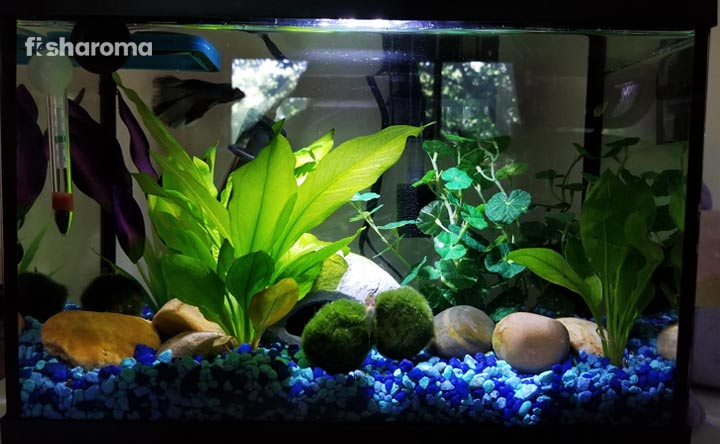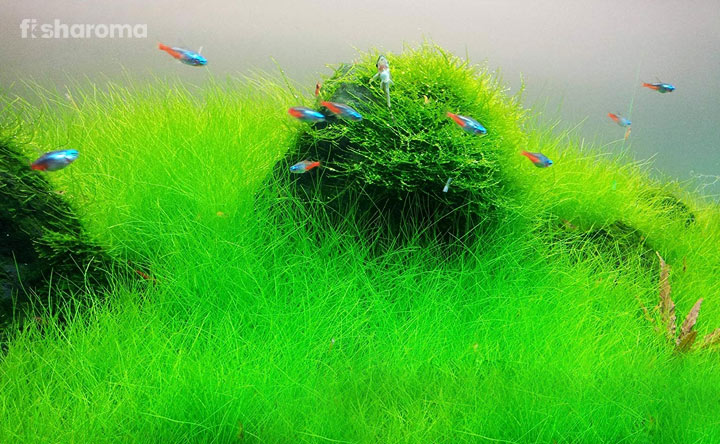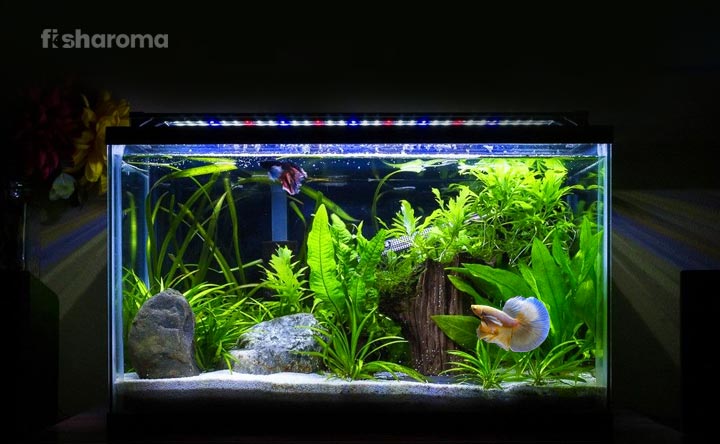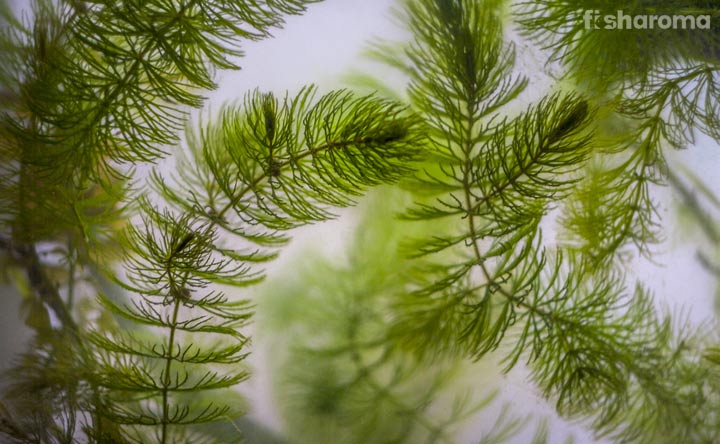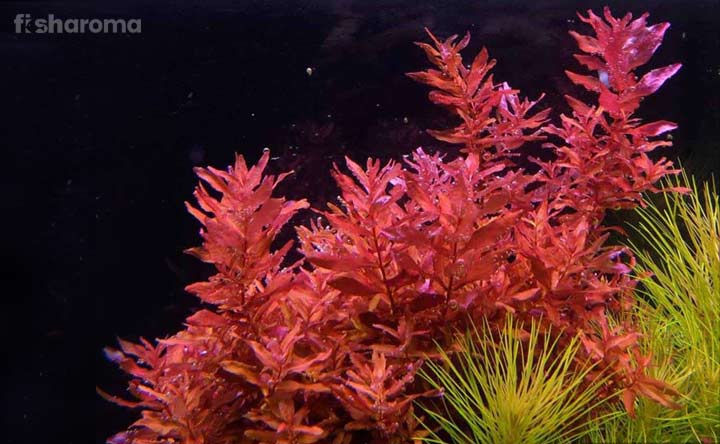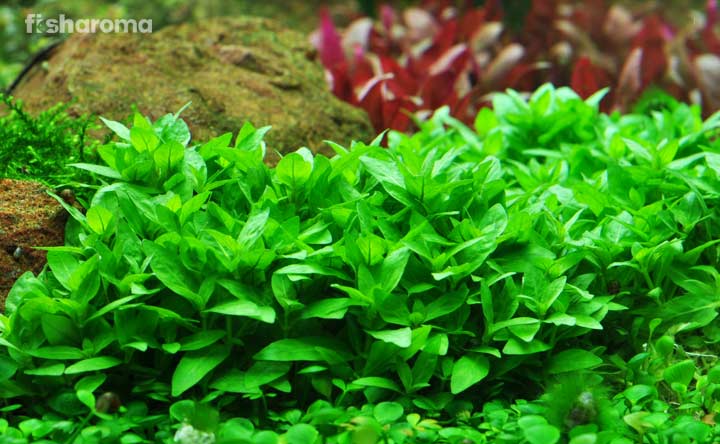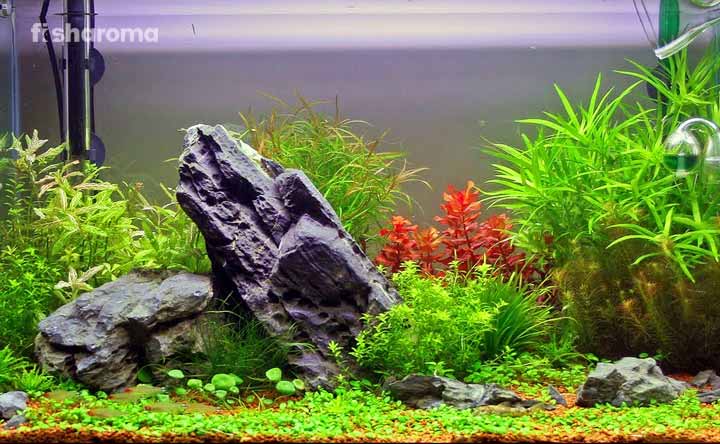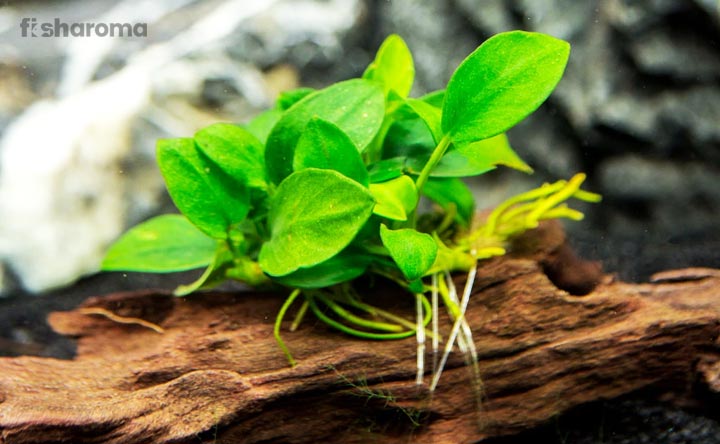Java Moss Complete Care Guide – Propagation, Growth, and Benefits of the Plant
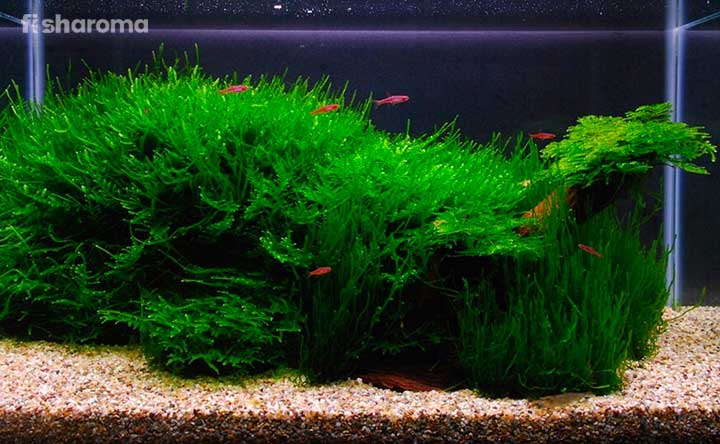
Are you planning to decorate your water garden similarly like a beautiful plantation under a river or a pond? Your pet fish and other aquatic species also like to live in a natural ambiance, so try to provide an eco-friendly environment in your aquarium by keeping beautiful aquatic plants like Java Moss.
You may have ideas about different care guides on petting various fish breeds or other aquatic pets, but plants also have some specific care guides, which are often maintained by the hobbyists. We are here to help you with the care guide of Java Moss, the floating tropical plant of your fish tank.
Quick Details
Usually, Moss grows in moist tropical climate on rocks and tree trunks under rivers and streams. The petite requirements and hardy nature of this plant makes it one of the most adaptable and beginner-friendly plants in the aquatic world. Before we get into the in-depth of the care guide, have a look at the quick overview of this plant in the table.
| Scientific name | Vesicularia dubyana/Taxiphyllum barbieri |
| Family | Hypnaceae |
| Plant Size | 4” (10 cm) |
| Tank size | 5 gallons |
| Growth Rate | Slow to Medium |
| Care Level | Easy |
| Lighting | Low |
| Water Conditions | 59-86°F (15-30°C), pH 5.5-8.0, KH 6-20 dGH |
There is an ongoing confusion regarding its real scientific name. Both Vesicularia dubyana and Taxiphyllum barbieri are used by aquarists.
Overview
Java Moss is also known as Christmas Moss or Singapore Moss. It is relatively easy to grow and maintain this rock vegetation. This water plant can provide fresh greenery in a plain or bare fish tank. So, aquarists love keeping this South Asian plant in the water garden of their aquarium for enhancing the beauty, and for delighting the mood of their pet fish.
Origin and Habitat of Java Moss
Native to Southeast Asia, Java or Christmas Moss is often seen in the rivers near Japan, Indonesia, Malaysia, Singapore, Vietnam, Philippines and the island of East Indian Archipelago.
It grows in a moist tropical climate on the rocks and gravels in water, so you can plant it on driftwoods if you want to keep it in your aquarium. Since it is commonly found near the rivers and streams of Singapore, so it is known as Singapore Moss.
Appearance of Java Moss
It is a delicate water carpet plant that grows up to 4” (10 cm). Its overlapping oval-shaped leaves are light and bright green in color, which covers the tiny stems, and grows up to 2 mm. This plant can freely float on the water surface or use its rhizoids to attach itself to the substrate, rock or driftwood. It absorbs nutrients from its leaves and stems.
Benefits of Java Moss
This popular freshwater plant is not only planted for the beauty of the tank, but there are other reasons to keep this plant in an aquarium. Take a look at some of the benefits of this plant:
- Java Moss aerates the water of the tank. It helps in the oxygenation process.
- It can act as a natural filter for your aquarium.
- It is an ideal place for the spawning of some fish breeds.
- It reduces the growth of obnoxious algae in your fish tank.
- This plant secures the substrates at the bottom of the tank by acting as an eco-friendly carpet.
- This aquatic plant acts as a nest for those fish that lay eggs on the leaves of the plants.
- It also acts as a shelter for the shy aquatic species and helps them hide from their enemies.
- This plant helps in hiding the tiny fries and juvenile fish in its moss mat.
- The leaves of Moss are one of the favorite foods of herbivoros fish and small fries.
- Finally, it acts as a natural adornment in a fish home with its beautiful branches and leaves.
Tank Requirements for Java Moss
As we have mentioned above, Moss is a hardy plant, which is comfortable in every type of water, whether it is tropical or brackish. For planting this plant, keep some important aspects in mind:
Tank Size
You need a 5-gallon tank for planting this 4” (10 cm) plant. If you are planting two or more Moss plant, then a 10-gallon aquarium is ideal for the growth of the plant.
Lighting
Java Moss prefers living in a low-light aquarium because it can make its foods with low light energy. Moreover, it does not need sunlight in abundance. You can add a low fluorescent or LED light in the tank.
Substrate
You don’t need a special substrate for planting Java Moss because you can plant it on stones, driftwoods or gravels. The substrate is optional for the growth of this plant. You can use fine powder substrate available in market, which you can use in planting this tropical plant. You can also add a pre-made Moss carpet at the bottom of your fish tank.
Supplements
You can add liquid fertilizers and a dosage of CO2 to speed up the growth rate of Moss. You can provide micronutrients such as Potassium, Phosphorous, and Nitrogen through the water column as well.
Filtration
Arrange a filter in the tank to provide proper water circulation. It will help in keeping the water clean and adding current in the tank.
Water Type for Java Moss
The water condition of the tank should include soft acidic water and mild water current like natural streams or rivers. Take a look at the requirements in maintaining the water of the aquarium:
Temperature
The ideal temperature of water for the growth of Java Moss should be 59-86°F (15-30°C). This plant can tolerate the temperature up to 30°C but not more than that. Always remember, that this Moss cannot grow in warm water; it needs a cold temperature to grow fast.
pH Level
The pH level of the water in the aquarium of Java Moss should be 5.5-8.0. Try to test the pH level of the water beforehand. This aquatic plant is comfortable in relatively soft acidic water.
Hardness
The hardness of the water in the aquarium should be 6-20 dGH.
Replacement Process
You can change 5% of the water in the tank on a weekly basis, and 20% of water on a monthly basis. Try to ensure that the temperature, pH level, and hardness of the new batch of water is similar.
Cleaning Method
Avoid using harsh soap that has chemicals. Use lukewarm water and mild liquid soap to clean the aquarium. You can use a gravel vacuum cleaner or siphon to clean the gravels, decorations, and rocks of the aquarium.
How to Plant Java Moss?
The plantation process of Java Moss is simple. Aquarists just need to follow some easy alternative ways of planting this freshwater herb. We are here to help you in planting this beautiful Southeast Asian aquatic plant.
- Drop Java Moss on top of the water if you want it floating
You can leave a piece of Moss on the surface of the water. It will gradually develop into a floating moss plant and grow naturally.
- Tie the Java Moss to a rock or a driftwood
Wrap a fishing line or a dark thread around a thin layer of the moss and tie them into a small knot. The knot will help the roots in adhering to the wood or the rock. Similar to Java Fern you can grow Moss on driftwood or on rock.
- Make a carpet with the help of Java Moss
If you want to see the Java Moss carpet on the floor of the tank for adorning the tank, then collect two pieces of mesh and thread. Ensure that the materials you are using in the tank are non-toxic. Now lay down a piece of mesh, and cover it with Moss. Put the second piece of mesh on the top of the plant and use threads to secure both the pieces.
This sandwiched Moss can be placed into the aquarium, and it slowly starts growing through the mesh. You can apply this system to the floors and walls of the aquarium. This will enhance the beauty of the tank and give a natural feeling to your pet aquatic species.
While growing in a natural process, Java Moss spreads both vertically and horizontally and often forms into dense tufts. If you want to maintain its shape, then trim the leaves of the plants weekly.
How to Take Care of Java Moss?
This a hardy aquatic plant, which can grow naturally but it is your choice, either you want to see the plant growing wildly or not. You need to give a good shape to the beautiful moss by trimming its leaves. Have a look at a few care tips for Java Moss:
- Use a pair of a scissor to trim the leaves of the plants, and let it grow naturally in a good shape, as an ornament of your fish tank.
- Maintain the water quality of the aquarium, so that the plant grows naturally.
- You can add liquid fertilizer like API Leaf Zone Aquarium Plant Food for the natural growth and bright color of the plant.
- Algae is the main enemy of Moss because once it starts growing on the moss, then it will be hard to remove them. So, avoid excessive light in the tank which is the prime reason for algal growth.
- Change the water of the tank weekly to prevent water pollution which can be harmful to the growth of the plant.
- Pluck out the dead leaves of the plants when required.
Don’t keep dyed bottom substrate, coral stand or quartz chips at the bottom of the tank because these things increase the hardness of the water, which is harmful to the health of Java Moss.
Propagation of Java Moss
If you want to encourage the propagation of Java Moss, then just break a chunk off from the plant, and get some roots along with the chunk. After that, tie the chunk down with driftwood. This plant has no visible roots, so it can attach its invisible roots with the driftwood and other plants can be grown by a single plant.
A single Java Moss can give birth to numerous plants without any extra care and effort. It will need 1-2 days in the development of a new plant from one moss. Usually, Java Moss releases its spores in winter. Moss grows in a slow to medium process.
Compatibility of Java Moss
Java Moss has no compatibility issue with many aquatic species because it is a friendly and resilient plant. It is friendly with some aquatic plants also.
Suitable Tankmates
There are some suitable companions of Java Moss that consumes the major enemy of moss plants, algae. These species also eat the bushes of the moss and keep the moss plant clean. Have a look at the names of some suitable tankmates of Java Moss:
- Amano Shrimp
- Catfish
- Cherry Shrimp
- Japanese Algae Eating Shrimp
- Bristlenose Pleco
Unsuitable Tankmates
Some fish breeds tear and eat up the leaves of Java Moss. Expert aquarists suggest not keeping such species with moss. Some prime enemies of this plant are:
- Cichlid
- Siamese Algae Eater
Common Issues in Rearing Java Moss
Although it is a resilient plant, aquarists face some common problems while planting Java Moss. If they act smartly, then they will not face such problems. Take a look at some common problems mentioned below:
- It can clog the filter of the aquarium if you don’t regularly trim its leaves.
- If you don’t prune it regularly, then the moss will take over the space of the entire tank and convert it into a dense forest because of its high growth.
- If the moss grows dense and thick, then the water cannot reach the middle and the bottom sections of the roots of the plant and its color may turn brown. Moreover, it may get dislodged from whatever it is attached to.
- Although algae do not grow in subdued lighting, if they once start to grow, then they are hard to remove from the moss.
- Without a mild water current, Moss may get damaged because the nutrients are delivered with the help of the current flow in the water.
- Too much fertilization may damage the leaves of this plant, so balance the nutrition of the plants.
FAQs about Java Moss
There are some common questions and answers that are given about Java Moss. Have a look at some of them:
Can Java Moss grow out of water?
Yes, this plant can grow out of the water also. It is an aquatic plant, so it requires moisture to grow. It needs a lot of rain and high moisture content wherever it is planted. Aquatic Java Moss has much greener and larger leaves than the moss in the land.
Can we grow Java Moss on Sand?
No, you cannot grow any Moss on sand because you need a proper anchor for the roots of this plant. Sand is too soft, dense and cannot hold the roots of the moss and its anchor. You can easily grow a Moss Carpet on big gravels and driftwoods because these objects can hold the anchor easily.
How to remove algae from Java Moss?
It is tough to remove algae from moss, but you can use a soft toothbrush carefully on the moss to remove the algae. Don’t pull up the moss in that process.
What is the lifespan of Java Moss?
This aquatic plant can grow about ten years if you properly take care of the plant by providing the right amount of fertilizer and other nutrients.
Interesting Facts about Java Moss
- The rhizoids of Moss do not absorb nutrients, as the roots of other aquatic plants do.
- It can grow in snags and coconut shells also.
- Some people use dry leaves of Moss for heating their houses in winter.
- The side branch of Moss looks like the branches of Fir Plant, so it’s another name is ‘Christmas Moss’.
Know about More Freshwater Plants
Aquarists have a hobby of planting different plants in their aquarium. If you are also a hobbyist who likes keeping various freshwater plants in your water garden, then you can go through the care guides of some aquatic plants:
- Dwarf Hairgrass: Dwarf Hairgrass can also act as a beautiful and eco-friendly carpet in your aquarium like Moss. You can go through its care guide if you want it in the aquatic world.
- Java Fern: Similar to Java Moss, Java Fern can also float on water, and it requires less sunlight to grow. Have a look at its care guide if you want to keep this plant in your fish tank.

